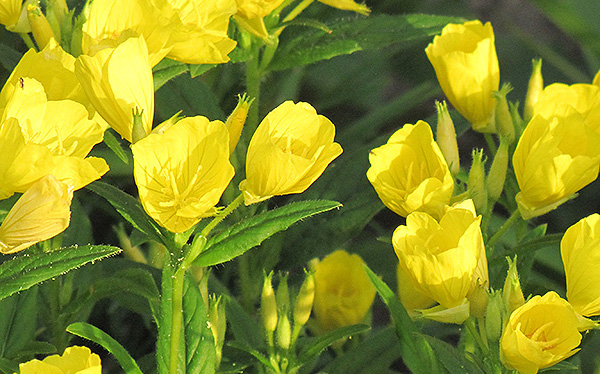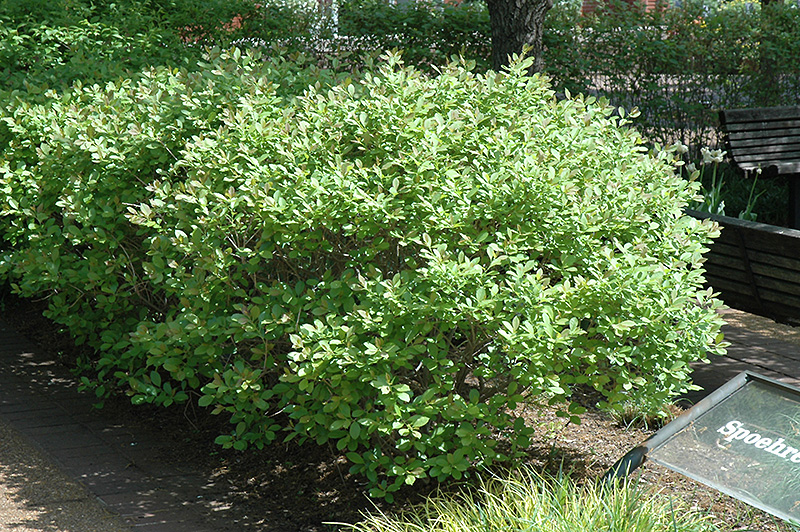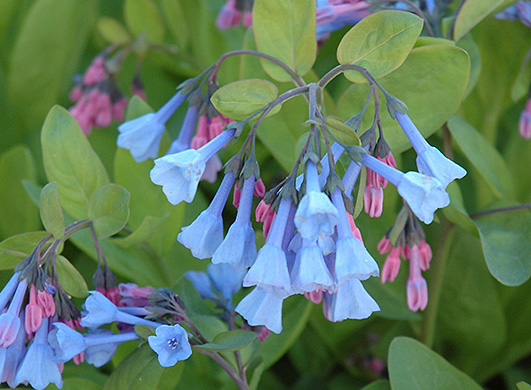Pennsylvania Native Plants To Plant In Your Garden

As you drive through the neighborhoods of Central Pennsylvania, you may be surprised by how much of the landscape you see originated in other countries. From Europe to Asia, many of the plant and tree species you see are non-native to the area.
Pennsylvania native plants are plants that thrived in the area before settlement. According to the Pennsylvania Department of Conservation & Natural Resources, there are approximately 2,100 native plants in Pennsylvania. Additionally, 1,300 non-native species exist throughout the state. More non-native plants are introduced every year.
As development takes away farmland and wildland, many Pennsylvania native plants are lost. In their place, homeowners add tropical plants and exotic grasses as showy centerpieces to their landscaping. They look beautiful, but they can become invasive. Instead, you should opt for Pennsylvania native plants for your yard, garden, and flower beds.
Skip Ahead:
- The Benefits of PA. Native Plants
- Trouble with Non-Native Plants
- Landscaping with Native Plants in Pennsylvania
The Benefits of PA. Native Plants
Landscaping with native plants has many benefits, both to you and to the environment as a whole.
- Low maintenance — Native plants are adjusted to the soil, climate, and rainfall of this region. For this reason, there isn’t much you need to do to coax them to grow.
- Color — Don’t think of native plants as just a wall of browns and greens. Plants native to this region offer year-round bursts of colors that change seasonally.
- Fewer pesticides — Because native plants have thrived in the same environment as local pests, they have adapted to one another. Native plants can tolerate these pests and many native plants may even attract beneficial insects. This means there is less need for chemical pesticides throughout your yard.
- Conserve water — Native plants help conserve water. They have long grown accustomed to local rainfall amounts and don’t require much additional watering to grow.
- Support wildlife — Birds and pollinators depend on trees, shrubs, and other plants as their food source. They have adapted over the years to live on the pollen, fruit, and seeds these plants produce, as well as the insects they support. When you choose native plants, you are providing a dependable food source for local wildlife.
The Trouble with Non-Native Plants
As mentioned above, native plants are the base of the food chain for many local birds. Although many homeowners offer bird feeders with seeds, nuts, and fruits, 90% of birds raise their young on caterpillars. They depend on native plants and the insects that have co-evolved with them. Non-native plants, in general, tend to support fewer species of caterpillars and provide less food.
Additionally, invasive plants tend to emerge earlier in the spring, leaving native plants to fight for nutrients, space, and other resources. They are aggressive growers and can often survive and reproduce under adverse conditions, essentially pushing native plants out of the growing space.
Landscaping with Native Plants in Pennsylvania
Our native plants of Pennsylvania guide offers many suggestions for adding native plants in your home landscaping. Be sure to follow responsible landscaping techniques and do your best to match your property’s soil and light conditions to the native plants you choose.

Pennsylvania Native Trees
- Red maple (Acer rubrum) — best for sunny sites, very adaptable to light and moisture, bright red to orange fall colors
- Eastern white pine (Pinus strobus) — best for sunny sites, graceful shape, high wildlife value
- Eastern hemlock (Tsuga canadensis) — best for sunny sites, evergreen trees which can also tolerate shade
- Eastern red cedar (Juniperus virginiana) — best for sunny dry sites, evergreens with sky blue, berry-like cones
- Swamp white oak (Quercus bicolor) — best for sunny sites, produce acorns that feed the local wildlife, tolerate water more than other oaks
- Sugar maple (Acer saccharum) — best for sunny sites, also adaptable to dry sites, can be tapped with a spile for home-made syrup
- Flowering dogwood (Cornus florida) — best for shady sites, prefer acidic soil, produce red berries
- Sourwood (Oxydendrum arboreum) — best in sun to part shade, need acidic soil, bloom in summer, outstanding fall color
- Eastern redbud (Cercis canadensis) — best in part sun, tolerate full sun with age, beautiful lavender flowers in spring
- Fringetree (Chionanthus virginicus) — large shrubs or small trees, fragrant flowers in mid-spring, female plants may produce berries in summer
- Black Tupelo (Nyssa sylvatica) — fast-growing shade trees with brilliant fall coloration
- Green hawthorn (Crataegus viridis) — white flowers in spring turn into red berries in the fall, use caution with thorns
- River birch (Betula nigra) — fast-growing shade trees for moist areas, host several butterfly and large moth species, impressive peeling bark adds winter interest
- Sweetbay magnolia (Magnolia virginiana) — multi-trunked trees tolerant of moist and wet soils, fragrant flowers in late spring to early summer, turn to scarlet red seeds in fall, birds enjoy the seeds, host various butterfly and moth species

Native Shrubs in Pennsylvania
- Summersweet (Clethra alnifolia) — best for sunny moist sites, also tolerate shade, support pollinators
- Winterberry (Ilex verticillata) — best for sunny moist sites, grow red berries
- Lowbush blueberries (Vaccinium angustifolium) — a smaller species of blueberry that can be grown as a groundcover, brilliant fall colors, more tolerant of dry soils than larger blueberries.
- Witch alder (Fothergilla major and Fothergilla gardenii) — grow in sun to shade with brilliant fall coloration and large white flowers in early spring
- Northern spicebush (Lindera benzoin) — grow in shade to sun, foliage release a pleasant scent when rubbed or crushed, host plants for the Spicebush Swallowtail butterfly, can be trained into small trees
- Swamp azalea (Rhododendron viscosum) — deciduous rhododendrons that tolerate both sun and moist soils, bloom in early summer with fragrant flowers
- Arrowwood viburnum (Viburnum dentatum) — very adaptable species can grow in sun, shade, and most soil types, white spring flowers turn into clusters of blueberries in fall
- Red twig dogwood (Cornus stolonifera (syn.) Cornus sericea ) — large shrubs with bright red stems in the winter, grow well in wet soils in full sun, produce small white berries for birds in summer
- American pussy willow (Salix discolor) — large shrubs to small trees with soft fuzzy flowers in late winter, grow well in sun, tolerate wet soil.
- New Jersey tea (Ceanothus americanus) — small shrubs with small white flowers in mid-June, host Spring Azure butterflies, leaves were used in colonial times as a decaffeinated tea substitute
- Virginia sweetspire (Itea virginica) — dense adaptable shrubs, outstanding fall coloration
- American wisteria (Wisteria frutescens and Wisteria macrostachya) — native species of wisteria that bloom later than other wisteria varieties, large clusters of purple flowers
- Smooth hydrangea (Hydrangea arborescens) — white-flowered hydrangeas for shady locations
- Mountain laurel (Kalmia latifolia) — broadleaf evergreens for shady areas, bloom mid-spring.
Native Perennials in Pennsylvania
- Bee balm (Monarda didyma) — best for sunny moist sites, aromatic nectar source, spread well to naturalize areas.
- Wild blue phlox (Phlox divaricata) — good groundcover for shady locations, bloom in spring.
- Oxeye sunflower (Heliopsis helianthoides) — best for sunny sites, tolerate drought once established, nectar for butterflies and seeds for goldfinches
- Golden sundrops (Oenothera frucitosa) — best for sunny dry sites, long-blooming, and drought-tolerant, bright yellow flowers
- Black-eyed Susan (Rudbeckia fulgida) — best for sunny dry sites, long-blooming perennials
- Goldenrod (Solidago rugosa) — best for sunny sites, adaptable to most soils, attractive to pollinators, bright yellow flowers
- Marsh blazing star (Liatris spicata) — most moisture-tolerant of the Liatris family, large purple or white spikey flowers in summer, tolerate drought when established
- Virginia bluebells (Mertensia virginica) — best for shady locations, early blooming
- Woodland stonecrop (Sedum ternatum) — succulent groundcover for shady locations, white flowers in spring
- Garden phlox (Phlox paniculata) — best in sun, grow like a small bush, large flower heads
- Cardinal flower (Lobelia cardinalis) — grow in shade to sun, must be planted in moist soils if growing in the sun, intense red flower spikes shoot up vertically at the end of summer
- Blue flag iris (Iris versicolor) — grow well in damp soil and full sun, light blue flowers in late spring
- Jerusalem artichoke (Helianthus tuberosus) — very tall perennials with sunny yellow flowers and edible tubers, versatile to most soils in full sun, birds enjoy the seeds in the fall
- Queen of the Prairie (Fillipendula rubra) — larger perennials that grow in sun or shade, prefers even moisture if sun-grown, large pink flowers that pollinators love
- Mountain mint (Pycnanthemum muticum) — a good naturalizer for pollinators, leaves smell strongly of mint if rubbed or crushed
- Wild indigo (Baptisia australis) — grow in most soils, long-lived, produce large flowers in mid-spring, bushy and reliable.
- Butterfly milkweed (Asclepias tuberosa) — small plants with intense orange flowers in early summer, host plants for Monarch butterflies, tolerate drought once established, best in full sun
- Swamp milkweed (Asclepias incarnata) — grow in sun and tolerate wet soils, vanilla-scented flowers, host plants for Monarch butterflies
- Common milkweed (Asclepias syriaca) — grows in sun and tolerate drought, large and spreading, good for naturalizing areas, host plants for Monarch butterflies, summer flowers smell like lilacs
- Culver’s root (Veronicastrum virginicum) — best in sun to part sun, slow to establish but can grow to impressive sizes
- Canadian Columbine (Aquilegia canadensis) — best in sun to shade, reseed readily but non-invasive
- Foxglove beardtongue (Penstemon digitalis) — best in sun to part shade, tall spikes of white flowers in late spring
- Obedient plant (Physostegia virginiana) — grow well in sun, peculiar flowers hold their position obediently if moved, attract a small harmless beetle which birds eat
- Foamflower (Tiarella cordifolia) — spreading groundcover for shady areas, bloom with white sparkly flowers in spring
- Bunchberry (Cornus canadensis) — spreading forest groundcover with dogwood flowers, need acidic soil
- Golden ragwort (Packera aurea) — bright yellow flowers for shady locations.
If you want to learn about the best time to plant perennials, read our perennial plant guide.
Ferns Native to Pennsylvania
- Royal fern (Osmunda regali) — attractive tall ferns with interesting spore plume, grow in wet soil, best in shade to part sun
- Cinnamon fern (Osmunda cinnamomea) — similar to royal ferns with more finely dissected foliage, best in shade to part sun
- Sensitive fern (Onoclea sensibilis) — quick-spreading ferns grow as a groundcover, best in shade
- Hayscented fern (Dennstaedtia punctilobula) — feathery ferns with a peculiar scent when rubbed or clipped, best in shade
- Northern maidenhair fern (Adiantum pedatum) — odd hand-like fronds have the curious ability to repel water droplets off their surface, grow well in moist shady areas
If you want to learn more about Pennsylvania native plants, talk to the garden experts at our Home and Garden Centers. You can also shop online to add native plants to your garden.


